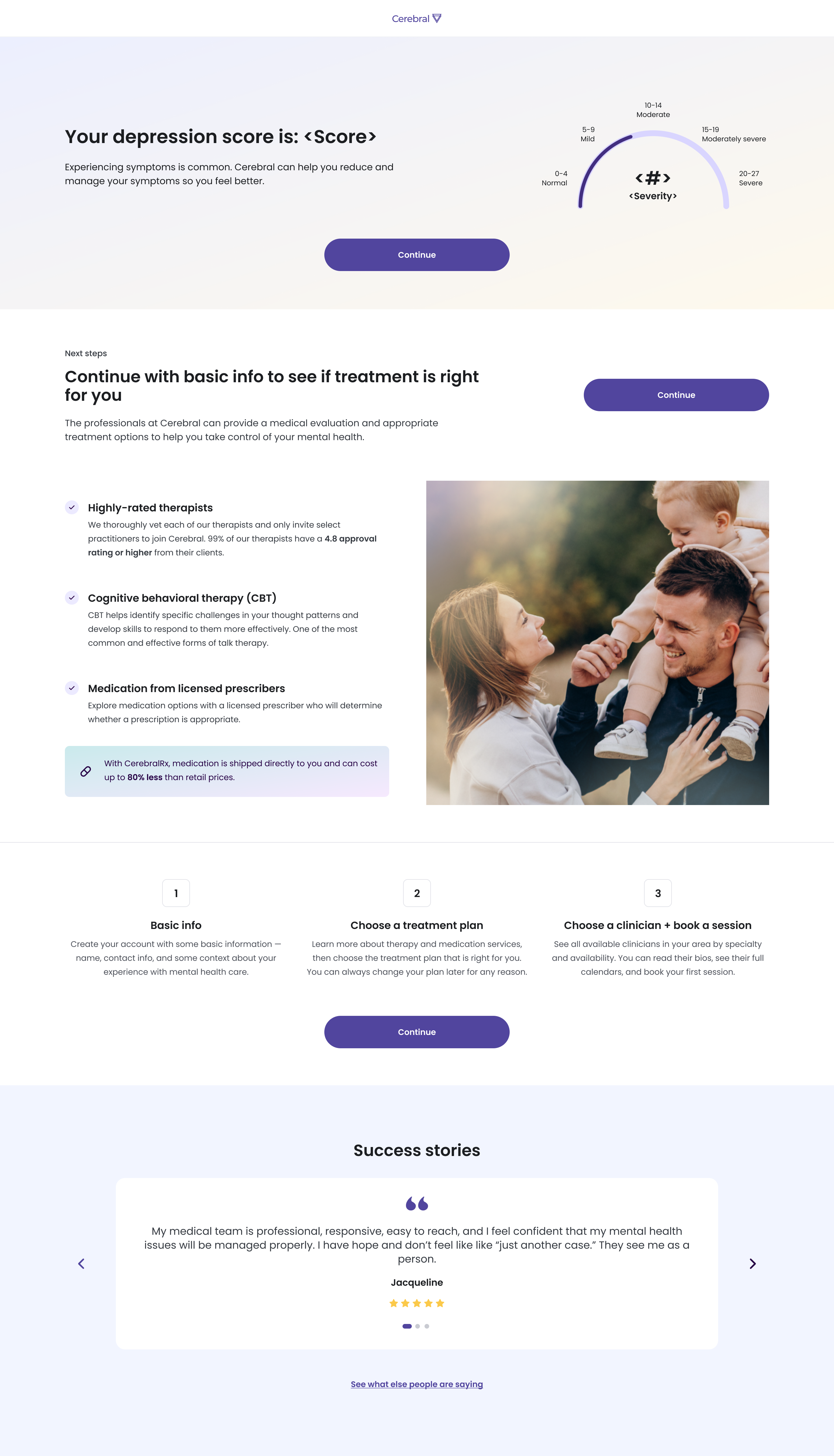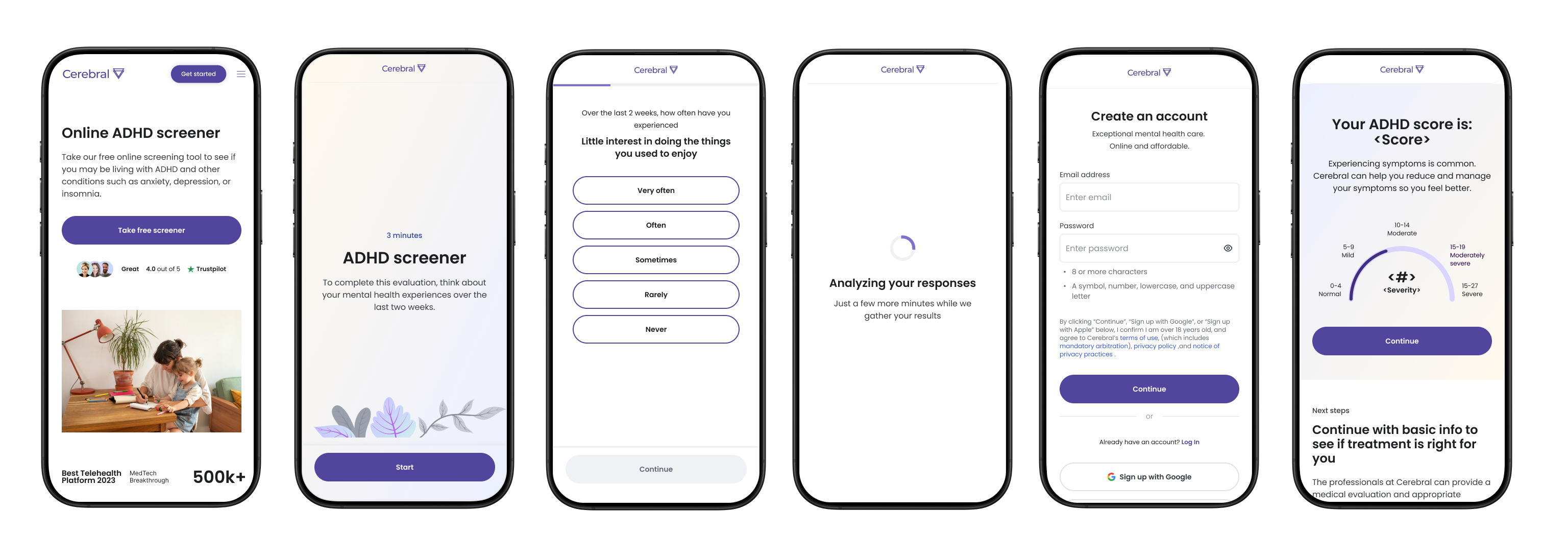1
Conduct a competitor analysis, perform a comprehensive audit, analyze user data, and create low-fidelities to establish the design direction
I conducted a competitive analysis to examine how products like Talkspace, Clinical Partners, and Headspace design their mental health assessments. Additionally, I referenced articles on psychology and human behavior to better understand the principles behind effective mental health evaluations.
I also reviewed the current experience to identify pain points and how it aligns with the overall user journey. Collaborating with the PM, I analyzed existing data and assessed the conversion rate, noting that only 10% of users click and few scroll on this page. Based on the research, I created several low-fidelity wireframes and discussed with stakeholders to define the direction.
Before: The text feels overwhelming, hard to read, and poorly crafted

Explorations
1. Focus on the symptom, its details, and how Cerebral can provide support
I proposed a storytelling approach that puts more focus on specific symptoms, Cerebral's treatment methods, and success stories to encourage users to engage with condition-related content and take advantage of free testing.

2. Leverage social proof and strengthen storytelling, concluding with a persuasive call to action that motivates users to take the next step
Another approach is to leverage social proof to highlight the product’s excellence by showcasing review scores and authentic customer testimonials. This not only builds trust but also influences potential customers’ decision-making, significantly boosting conversion rates. Additionally, I used powerful visuals and compelling content to emphasize the urgency and importance of completing the self-test, clearly outlining the steps visitors need to take and explaining why they should act immediately.

Approach and rationale for design decision-making
I presented both approaches to stakeholders, and we agreed that turning high traffic into meaningful conversions is critical for this project. We aligned on the importance of structured and persuasive storytelling, along with social proof, to influence potential customers' decision-making—ultimately driving more sign-ups and converting leads into paying customers. .As a result, we chose the second design as our template.








.png)




